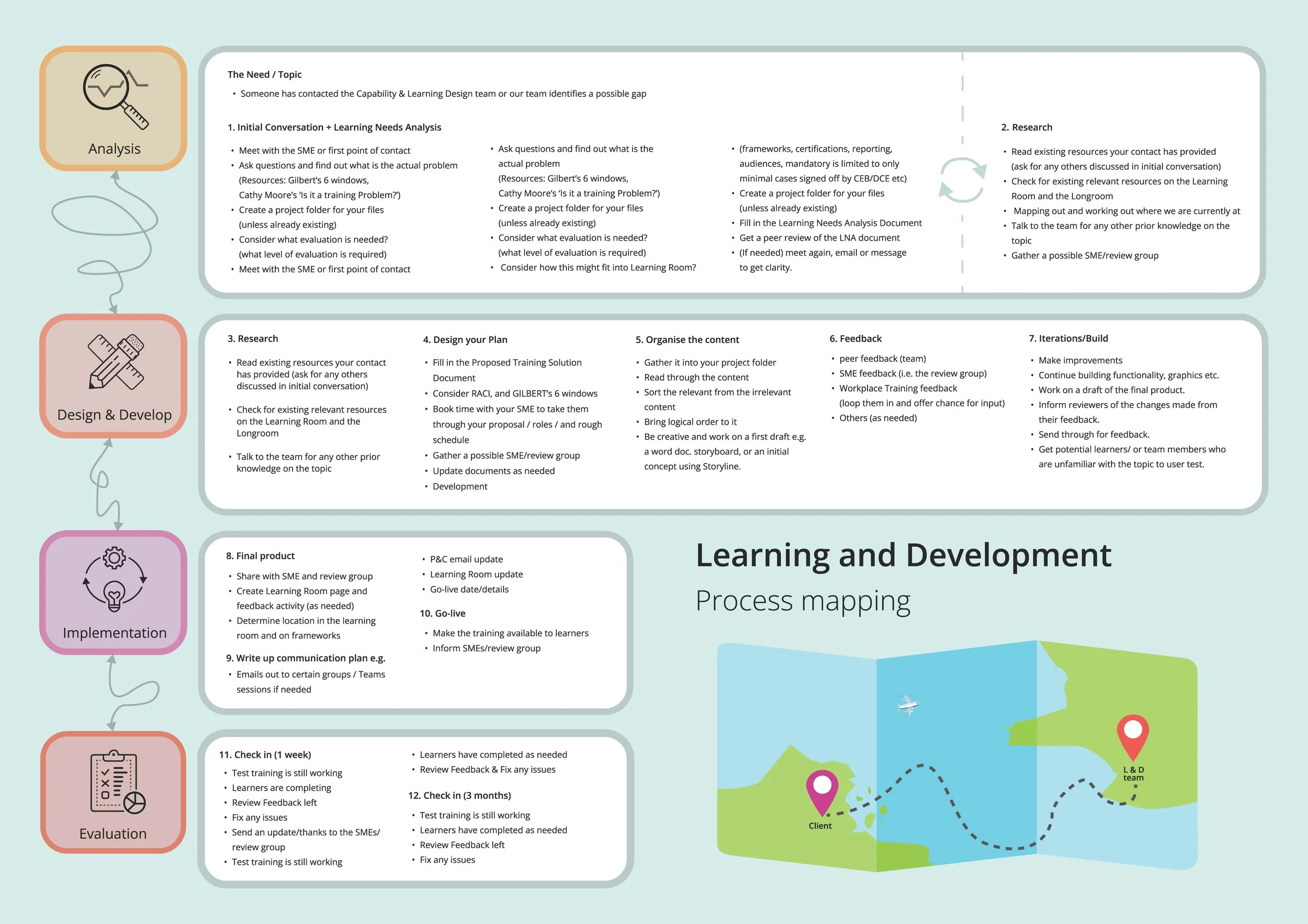As part of my current role, I tend to educate myself, my team, SMEs and clients on best practices in digital design. When I have time in between projects I like to sit down and create resources that I can pass onto whoever I’m working with to help them better understand certain processes. This is where visual communication plays a great role and makes designer’s life easier.
Learning and Development process map
Two of the tricky parts in being a designer are explaining your stakeholders where you are at with your process and navigating through a project in a way that will give you best outcomes at the end of the project. You want to make your client happy but equally important is having confidence in your process. The below process map may not always solve your problems (each project is unique) but it can provide you with some ideas and help you to get unstuck when you need a compass on your project journey. It can also help provide guidance to a new starter who hasn’t been exposed to a learning design.
Qualitative research (guide)
User/learner interviews are a great way how to learn about barriers your learners/users face. Not only they provide you with a first hand experience but also with additional data like behaviours, facial expressions or body language (you won’t learn those from surveys). The interview is only a small part of the task which starts with planning and ends with writing report about your finding. This guide is a good first step that might help designers with a few tasks that are involved.
Writing surveys (guide)
Important part of being an instructional/learning or UX designer is evaluation. Organisations and companies often not evaluate their resources or learning at all or they don’t do it effectively enough to produce important insights. Although, writing survey is not the most powerful research method, it often is the easiest as it provides quantitative data and clear evidence. The below guide is a good start for people who write surveys only a handful of times a year and don’t know where to start. As with other resources, it also serves as a good starting point for new starters who have no experience with writing surveys.




